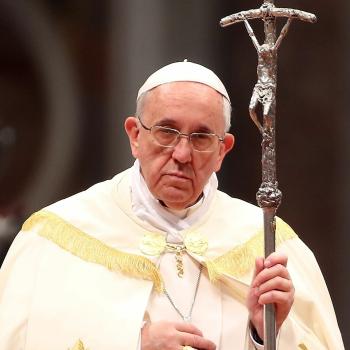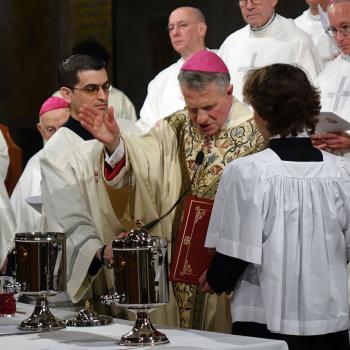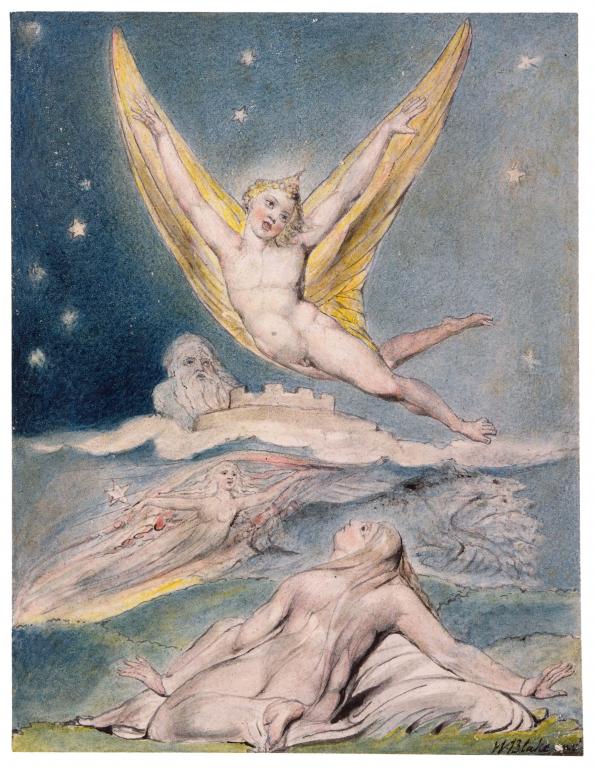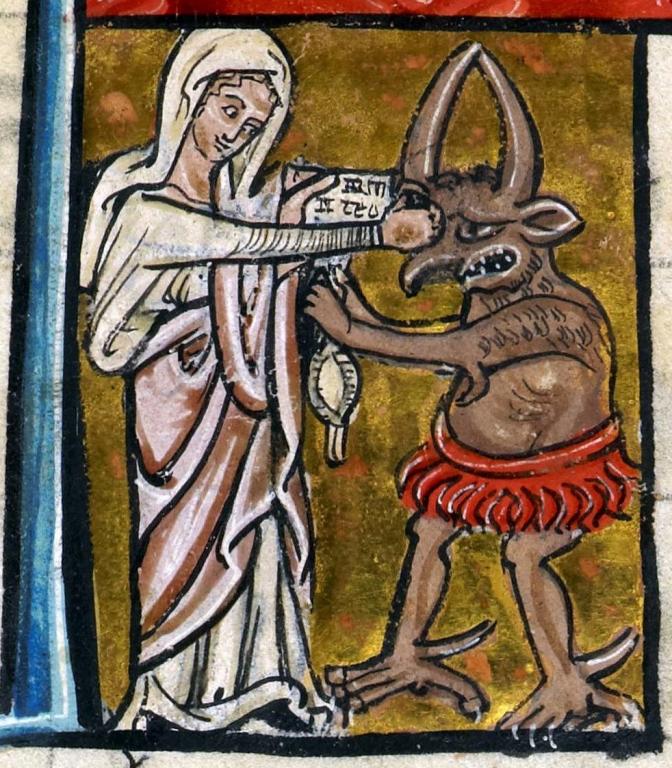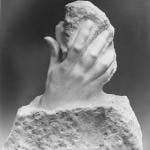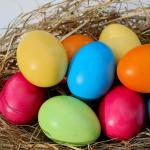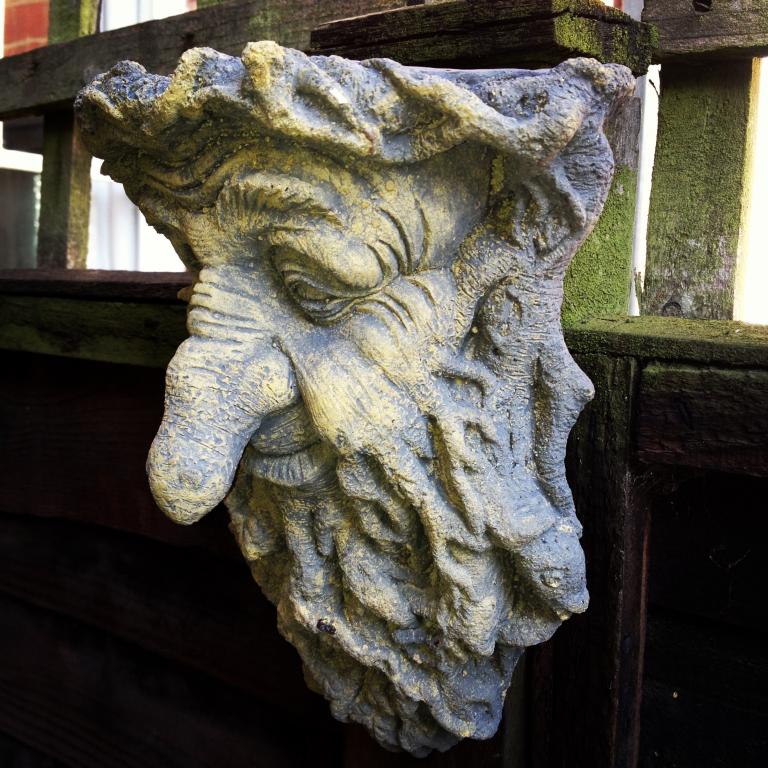
Ordinary Time
5 June 2018
The Edge of Elfland
Concord, New Hampshire
Dearest Readers,
Recently, I have been slowly re-watching Guillermo del Toro’s Hellboy II: The Golden Army. And first, let me just say what a travesty it is that del Toro will never get to film the third and final chapter of his planned Hellboy films. One of the things I love about Hellboy II is how much closer to home del Toro bring Faërie. The Troll Market, for instance, exists beneath the Brooklyn Bridge and, as it turns out, trolls and other creatures live among us, but because of a glamour we cannot see them as they really are. The whole film revolves on the idea that once there was peace between humans and the fairy-folk, between culture and nature, but we have forgotten them and pushed them out.
One of the most heartrending scenes for me is when Prince Nuada sets an Elemental, a forest god to be precise, on an unexpecting Hellboy and citizens of New York. Hellboy fights the god all while looking after a baby, a human baby. But before he gives the final blow, he hesitates. Prince Nuada uses this opportunity to persuade Hellboy not to fight against him, but to join him. Prince Nuada tells him that if he kills the forest god there will be no more, the “world will not see its like again.” Hellboy must now choose between humans and the fay-folk. Finally, Hellboy shoots it in the head and the god’s blood pours out of it, turning all the buildings, cars, in short all man-made things into grass and flowers and trees. Its blood makes the inert, the inanimate, alive as it dies. As Princess Nuala told Hellboy it is both a destroyer and a bringer of life, so it brings life as it is destroyed.
The scene has always spoken to me. After all, how could Hellboy not hesitate, the forest god is not evil, it is put to evil purposes by Prince Nuada, which complicates things even more since we cannot simply say that the humans are right or that the elves and the fay-folk are. Hellboy as a demon raised by humans must walk a middle path, one laid out for him by his Catholic father who too walked this middle path. But in the war between the humans and “nature” as represented by Nuada it is precisely nature that loses, the last forest god dies because Nuada put it in harm’s way.
This brings me to a recent article in Quartz, “A DISPERSED SELF: A debate over plant consciousness is forcing us to confront the limitations of the human mind.” The article brings to light new research as well as old that calls into question the consciousness of plant life. There are beginning to be those who argue that plants must, in some sense, be considered alive. They can be anesthetized, knocked unconscious, and thus must be conscious. They can be sleep deprived. They can, as I have told you before, communicate with one another through the Wood Wide Web as well as pheromones. They can learn and adapt. And while some do suggest that we go too far in saying they are intelligent or conscious, they are not the inert or inanimate things we have often been taught to see them as. Clearly they are more alive than we often allow ourselves to believe and their interconnectedness with one another as well as with animal life (not least of all humans) shows us a porous relationship between all creatures in creation.
And so we return to the green man. Yesterday, I wrote to you about the green men carvings in Southwell Minster. Poet, Theologian, Priest, and Musician Malcolm Guite has an excellent poem on those very carvings entitled “Southwell Leaves“:
Amidst the tympanum
His stone hair startles from
A face in the foliage.
Not just the bearded barleycorn
But a whole field springing,
The vine and all its tendrils,
Unfold from the face,
Trip from the tongue
That speaks the Word
Amidst the tympanum.
But by the rood-screen here,
His face is set like flint,
The Word unheard,
He gives his back to the smiters
His cheeks to them that pluck out the hair,
His spring is come to shame and spitting,
Under the blows the cut stones splinter
The Green Man comes to winter,
To the harness and the harrow
As flails fall to split the bearded husk
And seeds fall to the furrow,
Amidst the tympanum,
Hard by the rood-screen here.
Guite shows us the beauty of these carvings, of creation (itself a symbol of the church) being brought into the church. But this is not Guite’s only artistic take on the green man. He has a song on his album, The Green Man and Other Songs, all about the green man. Guite calls him the “unseen king of the ditches, ragged and royal.” The whole song is about nature personified, but also brought into our lives. “I’m the goodness in the bread, I’m the wildness in the wine,” Guite sings from the Green Man’s perspective. And here we see the key, the thing that was missing in Prince Nuada’s view of reality. It isn’t supposed to be a fight between two sides, nature and culture. Bread is good, wine is good too, but wild, remember Bacchus, remember Dionysus, even as they appear in Prince Caspian. But bread and wine, as we are reminded in the Mass are the fruit of the earth and the work of human hands. It is together that we move forward, not in struggle but in gift exchange. The plants and animals provide us life and food and we provide them with life and food, we benefit each other.
What, ultimately, the Green Man, the Elemental, the forest god, reminds us of is Faërie, and when we live rightly with Faërie, when we remember that God is not just the Lord of men but of elves and trees and angels and animals, when we remember that Christ united all of creation to his divinity by uniting divinity to humanity, then and only then can we live in a right relationship with creation. Until then, and even after, we will continue to need stories from or on the edges of Elfland in order to remind ourselves to see, not just ourselves, but reality itself, plants and animals and angels and whatever else there may be more clearly. Until then, remember, he’s the Green Man, don’t take his name in vain.
Sincerely,
David
P.S. A tip of the hat to Dr. Holly Taylor Coolman for sharing the Quartz article and to Dr. Kevin Hughes for suggesting we call this new way of understanding plant consciousness Faërie.



